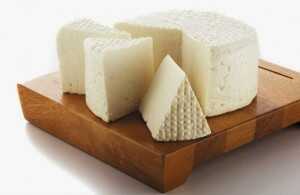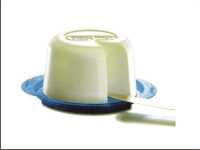A produção do queijo é um método de preservação do leite, portanto merece nossa citação, afinal é uma deliciosa arte que oriunda, assim como a charcutaria, da necessidade de preservação dos alimentos durante a evolução e expansão da civilização.
Vamos falar um pouco do Queijo Minas Frescal, que é classificado como um queijo branco e é um dos mais consumidos no Brasil. É um queijo “moderno” pois contém bastante umidade e por esse motivo tem vida útil baixa. Pode ser considerado moderno pois fugiu à regra original dos queijos, que prezavam pela durabilidade através de salga elevada e ampla e longa perda de umidade. Traz consigo a história do queijo mas adaptou-se ao mundo mais moderno, que permite a produção e comercialização de um produto mais perecível. Essa fuga das origens traz grandes vantagens, pois é um queijo que, justamente por não passar por cura, pode conter concentração de sal e colesterol reduzidas, bem como mais proteínas, vitaminas, minerais e cálcio.
Na lista dos queijos, os brancos são campeões em nutrientes, por isso são os únicos indicados pelos especialistas em alimentação e saúde. É muito nutritivo e dentre os demais queijos é o que tem menos colesterol (vilão do coração), reúne proteínas (auxilia a formação dos músculos), vitaminas A (antioxidante), D (auxilia a imunidade) e B (saúde de olhos, pele e cabelo), e minerais, como fósforo e cálcio. Por são reiteradamente sugeridos pelos nutricionistas.

É possível encontrar o Queijo Minas Frescal enriquecido com probióticos, micro-organismos vivos que equilibram as bactérias e protegem a flora. Como a maioria das vitaminas e minerais é absorvida pelo intestino, o consumo desses queijos auxilia o bom funcionamento do órgão.
Características
Geralmente, apresenta coloração esbranquiçada, consistência mole, textura fechada e sabor variando de levemente ácido a suave. O peso varia de 0,5 a 3,o Kg, sendo comercializado geralmente entre 0,4kg e 0,5kg.
É um queijo que exige muita higiene durante a produção, pois é muito perecível. A pasteurização costuma melhorar o sabor final do queijo, pois evita o sabor ácido, amargo. Ainda previne bolhas e estufamento, pois elimina a proliferação de bactérias.
Queijo Ultrafiltrado
Recentemente iniciou-se a fabricação do Queijo “tipo” Minas Frescal através do processo de ultrafiltração, que evita o dessoramento do queijo minas frescal, modificando consideravelmente as características do queijo e o distanciando do modelo original. Creio que nem deva ser chamado de Minas Frescal. Esse processo é lucrativo, pois o produto retém muito mais soro e resulta em um queijo com teor muito mais alto de umidade, chegando a ter textura gelatinosa.

Cultura Láctea
Pode ou não ser acrescentada uma cultura láctea para adicionar sabor ao queijo, mas não costuma ser muito utilizado em produtos industrializados pois pode reduzir a vida útil e criar bolhas no produto. Em produções caseiras pode ser utilizado iogurte natural após a pasteurização.
Pasteurização
Método 1) Rápida, utilizando equipamentos específicos, com temperatura de 75ºC por aproximadamente 15 segundos.
Método 2) Lenta, mantendo o leite aquecido a 65ºC durante 5 minutos.
Durante a pasteurização é recomendado adicionar cloreto de cálcio, pois há perda de cálcio durante o aquecimento.
Características gerais
– Massa crua;
– Consistência mole;
– Elevada umidade;
– Classificação como semi-gordo;
– Deve ser consumido fresco;
– Grande variação de sabores.
O leite utilizado na produção deve ser de boa qualidade, microbiológica e físico-química. Pode ou não ser padronizado quanto ao seu teor de gordura (cerca de 3% de gordura).




Este foi o quarto artigo que acabei de ser relacionado a esse tem e foi o que mais deixou claro para mim. Gostei.
Encontrei algumas dicas boas, estou fazendo o curso de tecnico em alimentos, e gosto de sempre ver informaçoes de preparo e fabricaçao de produtos alimenticios.